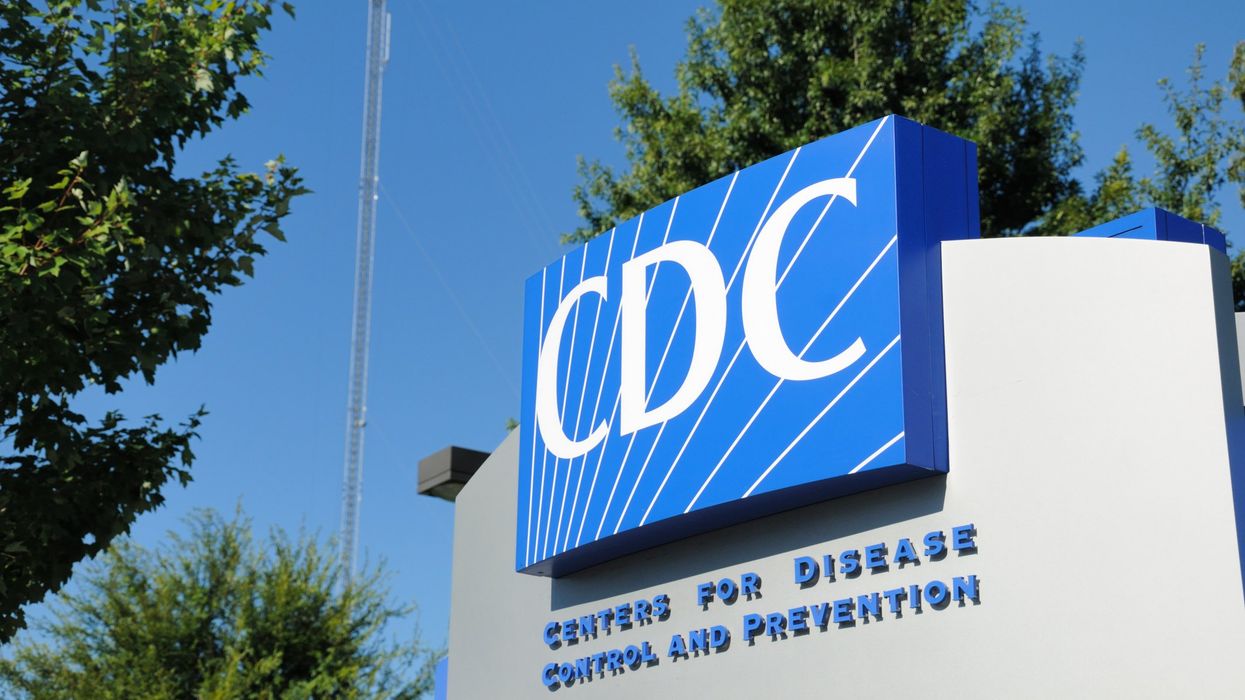WASHINGTON–Shayna Raphael started promoting infant safety 10 years ago after her daughter Claire passed away due to an unsafe sleeping environment at her daycare.
The Claire Bear Foundation, which Raphael created with her husband, teaches parents about unsafe products. But first, they need the data about which products endanger babies. They rely on a little-known agency at the Centers for Disease Control and Prevention (CDC), the Injury Center. The center collects most of the data used to keep people safe from injuries and death.
For instance, over the last several years, the Injury Center compiled data that led to a CDC recommendation against swaddling babies in blankets that are weighted.
A study referenced by the CDC found that soft bedding, including weighted products, increased the chances of suffocation 16-fold.
“When there are products that have been part of an injury or death that are reported, either through public health reports or autopsies, that goes into the CDC system,” Raphael said.
Despite the Injury Center’s importance, the Trump administration has targeted the agency in the recent wave of federal cuts.
In early April, the Trump Administration cut about a third of the Injury Center’s staff. A couple of weeks later, a leaked budget proposal for the Health and Human Services Department—first reported by the Washington Post and leaked by Inside Medicine—called for nearly 30% budget cuts at the Injury Center. According to the proposal, funding for programs ranging from firearm death and drowning prevention to traumatic brain injury research would be discontinued.
“In essence, what we're doing right now is taking off our seatbelt before we crash,” said Sharon Gilmartin, the executive director of Safe States Alliance, a nonprofit organization that works to strengthen practices of injury and violence prevention.
Over the last couple of weeks, local, state, and federal supporters of the Injury Center pushed back.
The Keep America Safe Coalition, a coalition of over 40 health organizations across the country, came together to advocate for the Injury Center's survival.
Under the leaked draft proposal, the Injury Center would be transferred to a newly created agency, the Administration for a Healthy America, which was announced in March. According to the draft, the Injury Center’s proposed budget for 2026 would be around $550 million, a decrease from around $760 million in 2024. A Health and Human Services spokesperson said the leaked document is pre-decisional and that no final decisions have been made.
Programs relating to suicide prevention, opioid overdose prevention, domestic violence and rape prevention, and the National Violent Death Reporting System would remain at the Injury Center.
According to the Safe States Alliance, 52 congressional representatives and 12 senators had signed letters expressing support for the Injury Center as o f May 15. None were Republicans.
One of the Injury Center’s congressional supporters, Rep. Gwen Moore, D-WI, said, “Any ‘restructuring plan’ that leaves state and local authorities without support to reduce preventable deaths and survivors of abuse without the resources they need must be abandoned,” in an email to the Medill News Service.
At congressional hearings on May 14, Health and Human Services Secretary Robert F. Kennedy indicated that any proposed cuts would eliminate waste and consolidate programs and centers to improve efficiency.
When asked about the Injury Center specifically, a Health and Human Services spokesperson redirected Medill News Service to President Donald Trump’s “skinny” budget proposal.
Although President Trump's administration has yet to release the full budget proposal, a redacted “skinny” budget was released in late April. In the “ skinny” budget, every single agency within the Department of Health and Human Services would see some sort of budget cut, with the CDC losing $3.5 billion less than it is currently allocated.
The “skinny” budget failed to specify which programs within the agencies would be cut or defunded.
The proposed budget and staffing cuts were not the only signs of an unstable future for the Injury Center. In last year’s budget appropriations process, House Republicans targeted the center for elimination.
“That was kind of our first indication that there was an effort afoot by some lawmakers, by some policymakers, to target the Injury Center,” said Paul Bonta, the director of Government Relations at the Safe States Alliance.
The Injury Center has played a crucial role in funding for injury prevention at the local level on acute health risks, ranging from firearms to falls by the elderly. These programs would be cut under the leaked budget proposal.
“All of the things that the Injury Center works on, most of them are preventable,” said Chrissie Juliano, executive director of the Big Cities Health Coalition. Juliano said, “So, we should be thinking about how can we best prevent those things and making changes where needed, but not breaking it all and then figuring out later how to rebuild it.”
There were more than 48,000 firearm-related deaths in 2022, according to the CDC.
The Big Cities Health Coalition, a member of the Keep America Safe Coalition, includes health officials from 35 of the country’s largest cities.
The Claire Bear Foundation, which is also part of the coalition, values the Injury Center’s data collection and research on adverse childhood experiences.
Research into adverse childhood experiences, such as abuse, violence, and unstable home situations, looks at reducing and researching traumatic events occurring in minors from birth to 17 years of age.
Under the leaked proposal, research on adverse childhood experiences would be cut from the Injury Center. Raphael said any cuts to research could have consequences for infant safety.
“These cuts, along with what’s already happened to [the National Institute of Child Health and Human Development] and other federally supported programs, make it even harder to identify and address risk factors, leaving families with fewer resources to help keep their babies safe,” Raphael said.
Ismael M. Belkoura is a graduate journalism student with the Medill News Service at Northwestern University. He specializes in health, business and legal reporting.





















